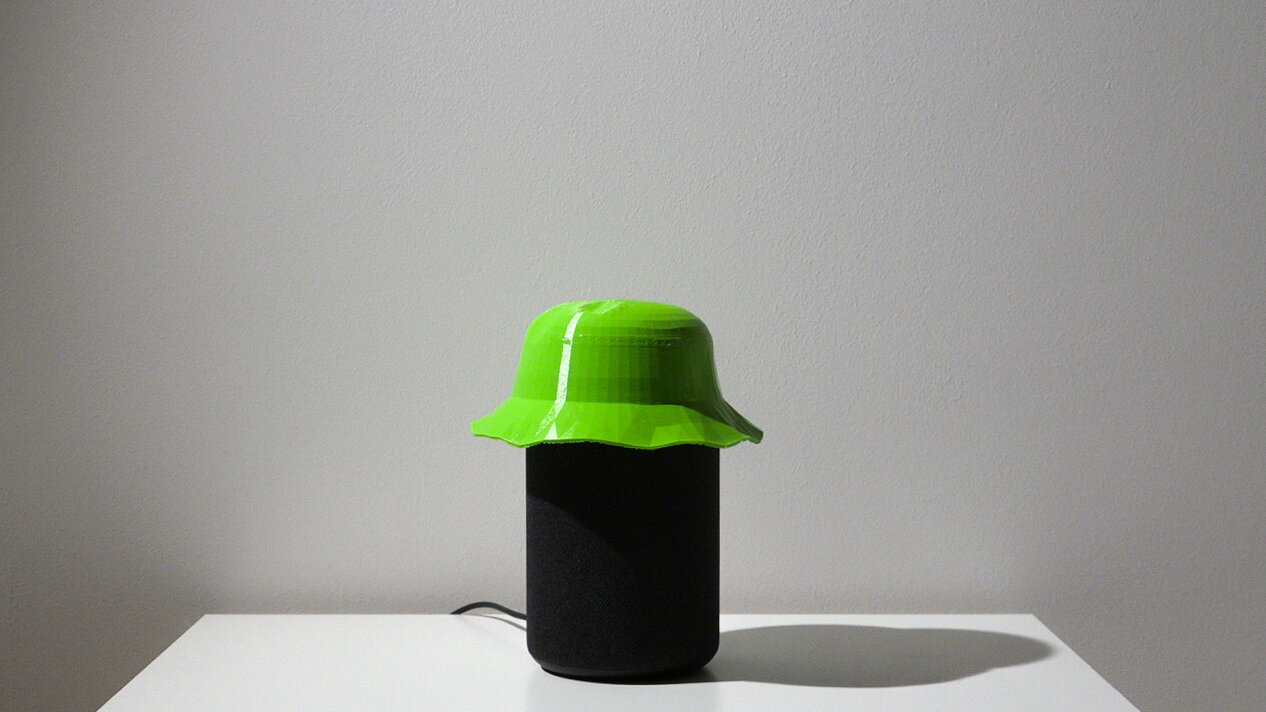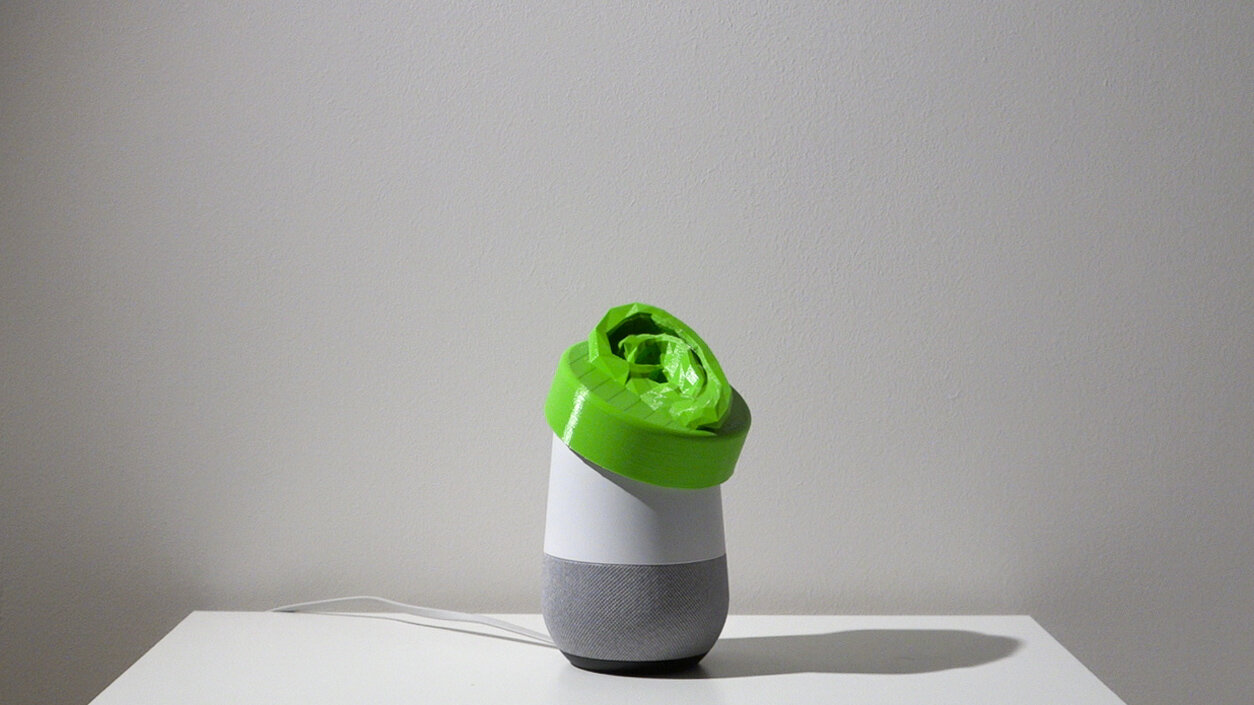
Hacking Conversational AI: Speculative Design As Resistance
Hacking Conversational AI: Speculative Design as Resistance In The Age Of Surveillance Capitalism
Date completed: 2020
MIT Media Lab, Master’s thesis’20
Author’s note:
HacKIT was part of my Master’s thesis at the MIT Media Lab. I was interested in exploring DIY and bottom-up approaches to building AI technologies. I worked on developing a speculative design toolkit to help everyday hackers and makers subvert the surveillance capitalism of Alexa, Google and Siri. I built upon Susan Sontag’s notion of “camp” and speculative design as a form of civic resistance to make hyper-visible often invisible operations of surveillance capitalism. I designed 3D printed “wearables” (read: swag) fitted with a sound-generating circuit that obfuscates and confuses speech recognition algorithms of Alexa, Google and Siri. This project was meant to provide a mirror to the pervasiveness of surveillance cultures in our everyday lives and to question new social imaginaries for our relationship with emerging technology.
Abstract:
Surveillance is now ubiquitous. It is used to refer to a set of technologies, a mode of governance, socio-cultural practices, and also, a way of being in the world. This thesis examines surveillance in the context of voice assistants such as Alexa, Google Assistant, and Siri. It investigates the sociotechnical implications of voice surveillance on everyday lived realities. Through the widespread adoption of “smart” technologies, surveillance technologies and its related cultural practices have become normalized. Users consent to, participate in, engage with, navigate, and resist surveillance on a daily basis. Emerging technologies have enabled new modalities of surveillance; from tracking web movement to monitoring physical location to extracting new forms of biometric data. Further, A.I. technologies have turned surveillance into a leaky and fluid exchange of information between governments, corporations, and third parties while giving little visibility to their users. This in/visibility discourse drives and reinforces the power dynamics between the surveillant and the surveilled. My work aims to invert this power hierarchy by empowering makers with the tools for hacking surveillance. HacKIT is a low to high tech civic privacy hardwear kit for the redesigning, hacking, and reclaiming of the Amazon Echo, Google Home, and Apple Siri. The voice devices are fitted with 3D printed “wearables” and a sound-generating circuit that obfuscate and confuse speech recognition algorithms. These visual oddities and audio glitches aim to subvert voice surveillance by turning it into a site of hypervisibility. Using speculative design as a form of civic resistance, we make hyper-visible and audible often-discreet voice surveillance operations. Beyond invention, HacKIT is an intervention towards new speculative futures for our relationships with emerging technologies, privacy, and surveillance. It puts an exclamation mark on surveillance and questions the hegemony of surveillance capitalism and its extraction and exploitation of human experiences. Ultimately, it is a mirror for critical reflexivity on normalized surveillance technologies and cultural practices in order to critically-make/create/invent humanity-centered technologies and futures.
DressKit: Prototype #1 of HacKIT
See link above for full thesis. As a sneak peek, DressKit was the first iteration of HacKIT. It was a play on “wearable technologies” by questioning who (or what is doing the wearing. It employed the aesthetic of camp as a critical design framework; while playing with over-exaggeration and the hyper-visible, they are subversive in nature. These “wearables” use visual metaphors of sound jamming and masking i.e. “earplugs”, “earmuffs”, “plunger”, “hat”, “phone case”. Each “wearable” will either be fitted with an ultrasonic jammer or a sound-proofing material; drowning and masking out sounds at 20kHz and below.

[3D printed on resin]
![Ultrasonic “wearables” for Amazon’s Echo.[3D printed on resin]](https://images.squarespace-cdn.com/content/v1/59c520d5b078695804edc126/1575168394211-N0HPR73YT0HLUBAQMLQN/Critday-echo.png)
Ultrasonic “wearables” for Amazon’s Echo.
[3D printed on resin]
![Sound-masking “wearables” for Apple’s Siri.[3D printed on resin]](https://images.squarespace-cdn.com/content/v1/59c520d5b078695804edc126/1575168421572-281M0LQBRAPB6V3IN7DU/Critday-siri.png)
Sound-masking “wearables” for Apple’s Siri.
[3D printed on resin]



